A little about San Blas. It is located about 100 miles north of Puerto Vallarta, about midway between PV and Mazatlan.
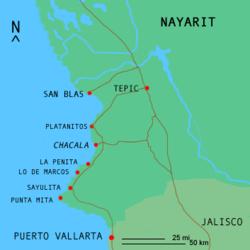
Our trip from Lo de Marcos to San Blas took about 2 hours.
San Blas is located at the far side of this beautiful bay. Click on Picture to enlarge.
Archaeological sites indicate that the state of Nayurit, where San Blas is located, has been populated for about 4000 years. Between 2000 BC and 1500 BC the area around San Blas was occupied by groups that perceived the sea to be a god. During this time, was the beginning of the artistic pottery that is so well known today. Many of these bowls and pots were buried with the dead.
For the next 2000 years, the area flourished and grew. From about 1000 AD until the arrival of Cortéz in the early 1500’s the artisans worked with metals to produce decorative jewelry and art.
Also in the 1500’s, San Blas became an important sea port to the north and west towards the Philippines. From San Blas, Spanish Priest Junípero Serra began his travels northward towards California to establish missions.
Somewhat more recently, I made my first trip to San Blas in 1982. The drive from Zacatecas through Guadalajara and on to San Blas will be remembered as the driving day from hell. I wouldn’t have wanted to make that trip pulling a 40 ft. RV. It was bad enough in a car. In the past ten years, a toll road now gets you most of the way. It is still not much of a treat from Tepic to San Blas. Many people heading south from Arizona tend to bypass Tepic in favor of San Blas so they don’t have to deal with as many mountains.
The road is still no picnic. The pavement is pretty good, but the brush and trees at the edge of the road are trimmed right to the edge of the pavement. Things grow so fast that the limbs soon encroach on driving space. Many RVer’s have reported damage to their rigs from limbs and branches. We have personally seen broken windows and damaged siding on some trailers and motor homes. We’re not going back to the states this way.
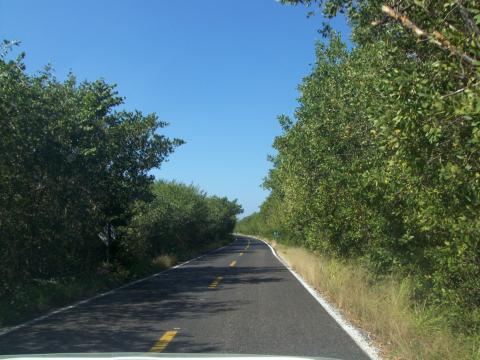
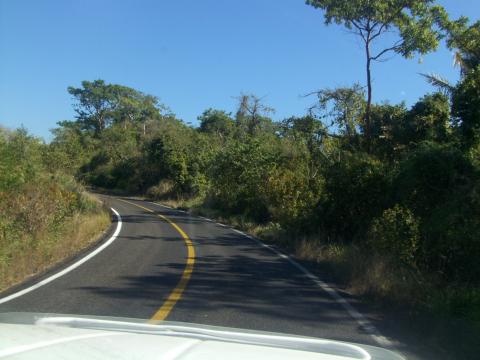
Anyway, back on track, my recollection of San Blas was that of a sleepy fishing village with a few thousand inhabitants and no pavement. I thought it interesting that the people would sweep the dirt streets. (Now we still see that in many Mexican towns.) In 1982, we stayed at the Suites San Blas hotel and in those days the price, including two meals, was $40.00 USD per day. The hotel is still there, but the price is $35.00 per day. I’m not sure that they still include the meals.
The front of Suites San Blas looks toward the ocean and naval base.
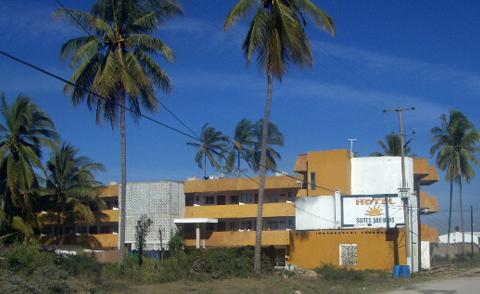
The rooms were one and two bedroom suites and the back side had a balcony that overlooked what, at that time, was jungle.
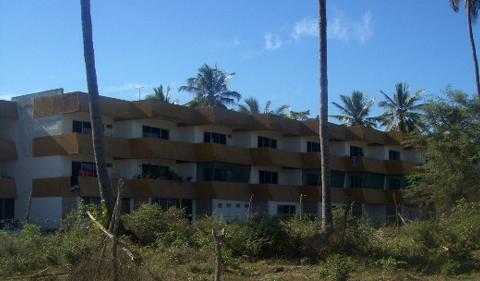
I mentioned the naval base. In 1982, during my earlier visit, there was no evidence that they had any naval ships or boats. They did have a marching band that would troop up and down the street at 8:00 every morning. No late sleeping allowed here. This trip they did have patrol boats and we didn’t hear the band.
San Blas is now a town with about 40,000 people. Nearly all of the streets are paved with cobblestones and some cement. Here is a street along the shore where there is a row of Palapa Restaurants on the beach. About a half mile south on this road it becomes a sand road, but the row of restaurants continues.
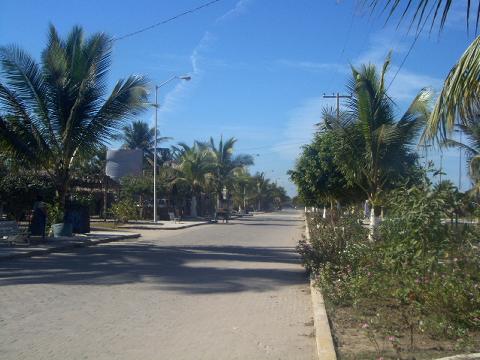
In 2002, San Blas was devastated by Hurricane Kenna. Generally everything is rebuilt or repaired, but some buildings such as this one were left to be reclaimed by the jungle.
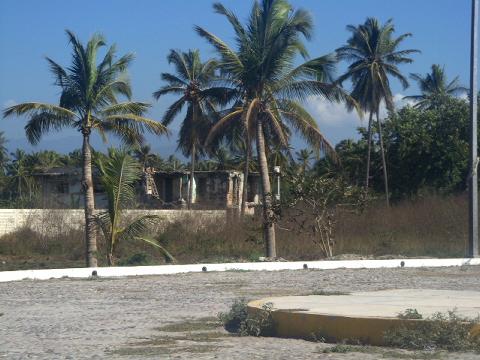
Here is present day San Blas.
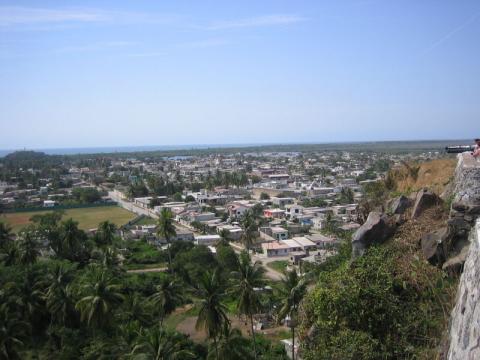
As in all Mexican towns, there is a town square. The one in San Blas is beautiful and spotless.
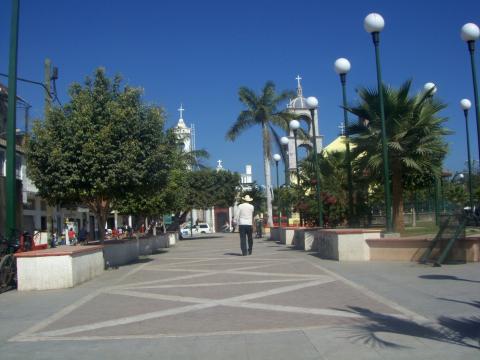
This is the Playa Azul restaurant. We ate at the adjoining restaurant, Alicia’s. We had excellent lobster and enjoyed the scenery before hitting the beach.
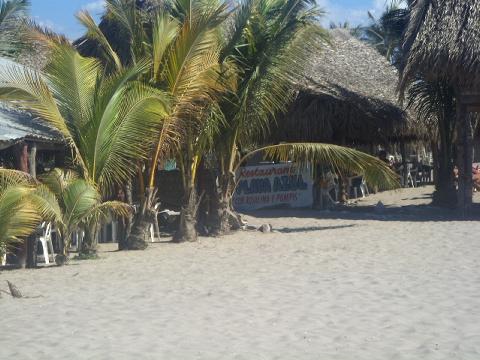
From our table, we spotted a horse tied to the lifeguard chair and the rider resting in the shade.
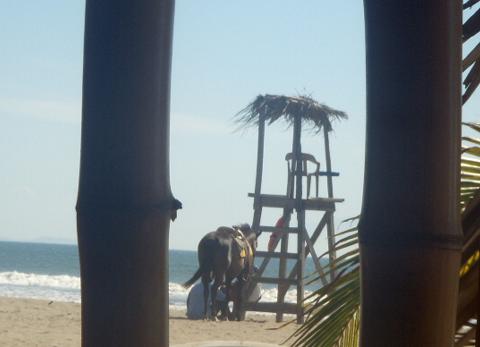
The weather was a little windy and the fine sand blew in the air unless you were right down on the water’s edge.
The beach is really flat and easy walking. The configuration makes it good for boogie boarding because you don’t get caught up in outgoing waves.
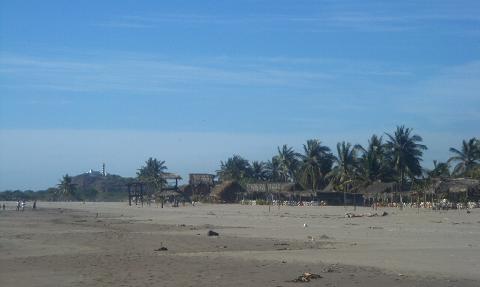
A few blocks from the beach we came across Los Cocos RV Park. We found it odd that unlike every other RV park in Mexico, it was nearly empty. The place is beautiful, but unfortunately, the rumors of the dreaded “no-see-ems” has taken its toll. These are insects that typically attack bare legs below the knees at around dusk. We’ve found them nearly everywhere. We didn’t, however, have a problem with them at San Blas (late January, early February). I also didn’t notice them during my 1982 visit which was the week following Christmas. Whenever we plan to be out near dusk, we always spray ourselves from the knees down. Here’s a shot of the park with its lone guest.
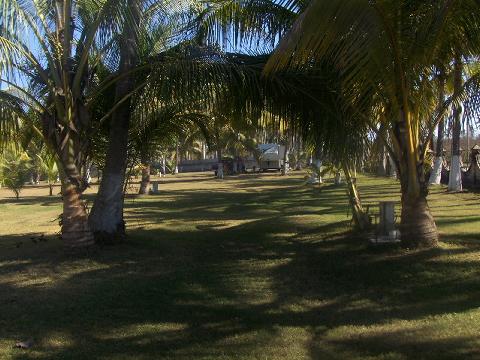
We elected to spend the night at Hotel La Garza, which was a pretty upscale hotel not far from the beach. We have a few shots of the lobby, pool, and room balconies.
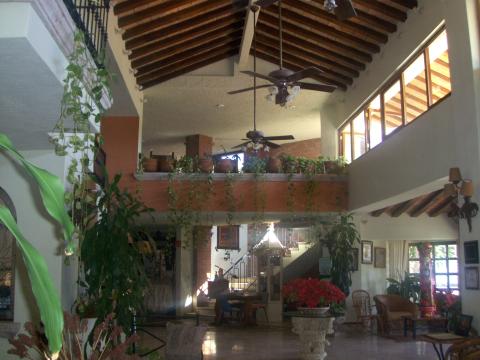
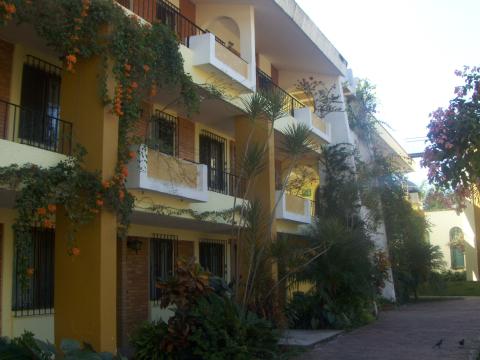
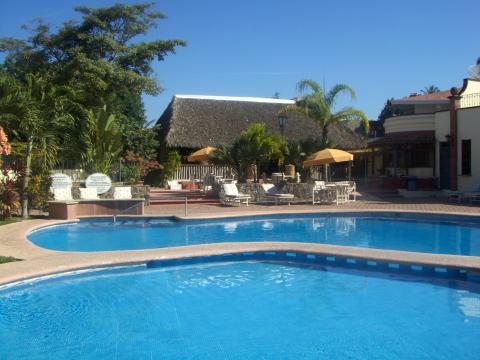
We found the hotel to be rather empty. There were a few tourists and several people that were staying here receiving treatment at a nearby medical clinic.
A true find was the El Delfin Restaurant and Bar that was located at Hotel Garza. We ate two meals there, dinner was excellent and the breakfast was outstanding.
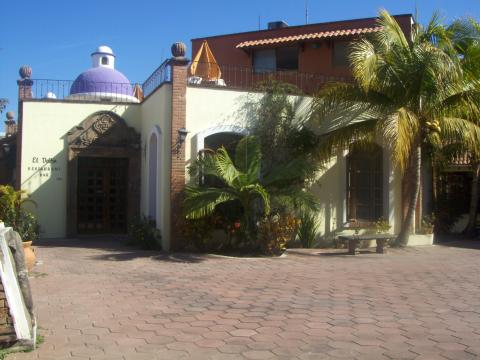
No trip to San Blas is complete without a boat tour of the La Tovara Jungle and Swamps. We’ll cover this on our next entry.
